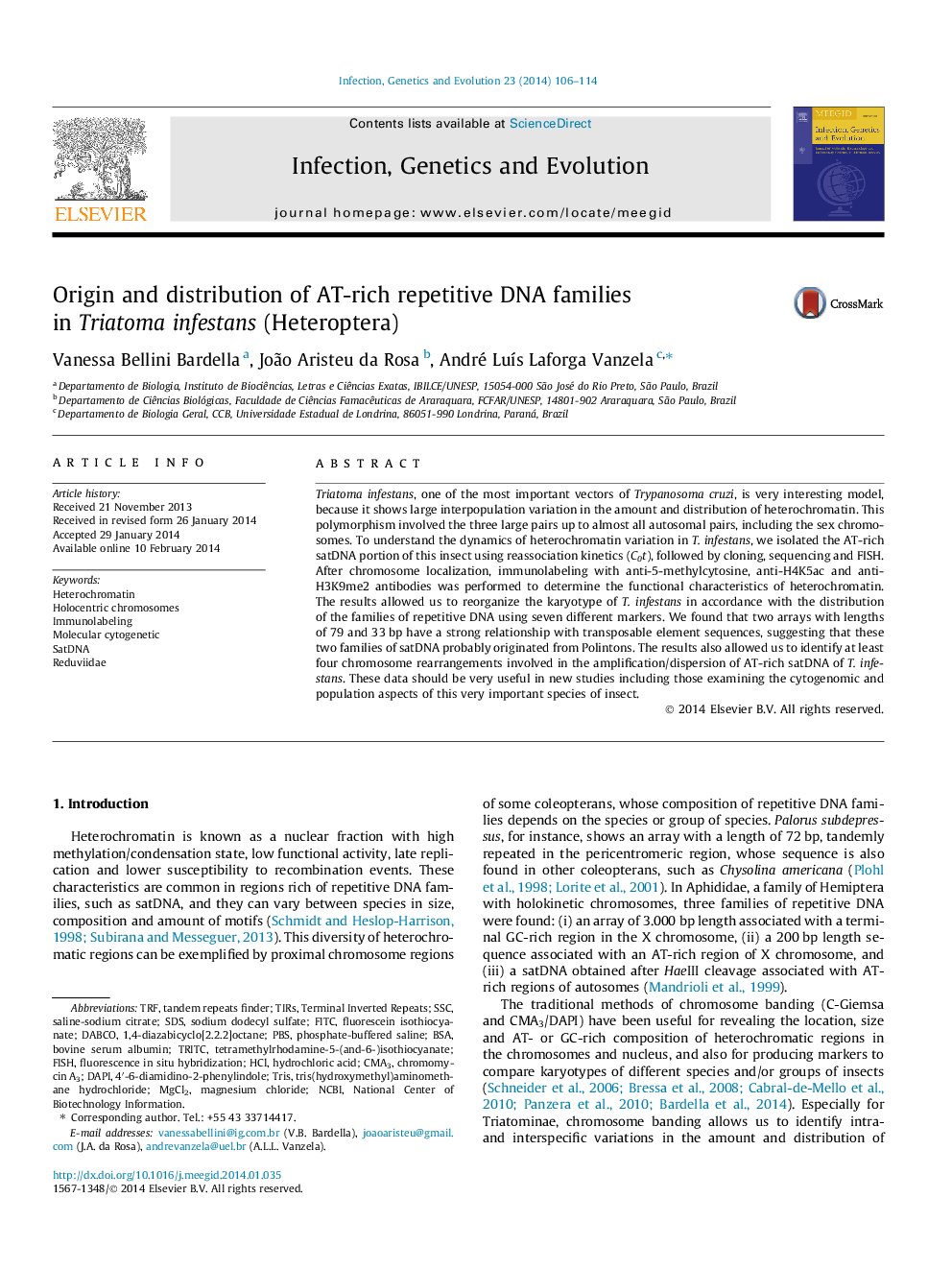| Article ID | Journal | Published Year | Pages | File Type |
|---|---|---|---|---|
| 5909904 | Infection, Genetics and Evolution | 2014 | 9 Pages |
â¢Localization of C-DAPI/CMA bands and 18S rDNA in Triatoma infestans from Peru.â¢Heterochromatin characteristic (immunolabeling with anti-5-methylcytosine, anti-H4K5ac and anti-H3K9me2 antibodies).â¢Heterochromatin composition of AT-rich DNA by two satellites with possible origin.â¢Seven different cytogenetic marks for the karyotype of Triatoma infestans.
Triatoma infestans, one of the most important vectors of Trypanosoma cruzi, is very interesting model, because it shows large interpopulation variation in the amount and distribution of heterochromatin. This polymorphism involved the three large pairs up to almost all autosomal pairs, including the sex chromosomes. To understand the dynamics of heterochromatin variation in T. infestans, we isolated the AT-rich satDNA portion of this insect using reassociation kinetics (C0t), followed by cloning, sequencing and FISH. After chromosome localization, immunolabeling with anti-5-methylcytosine, anti-H4K5ac and anti-H3K9me2 antibodies was performed to determine the functional characteristics of heterochromatin. The results allowed us to reorganize the karyotype of T. infestans in accordance with the distribution of the families of repetitive DNA using seven different markers. We found that two arrays with lengths of 79 and 33Â bp have a strong relationship with transposable element sequences, suggesting that these two families of satDNA probably originated from Polintons. The results also allowed us to identify at least four chromosome rearrangements involved in the amplification/dispersion of AT-rich satDNA of T. infestans. These data should be very useful in new studies including those examining the cytogenomic and population aspects of this very important species of insect.
